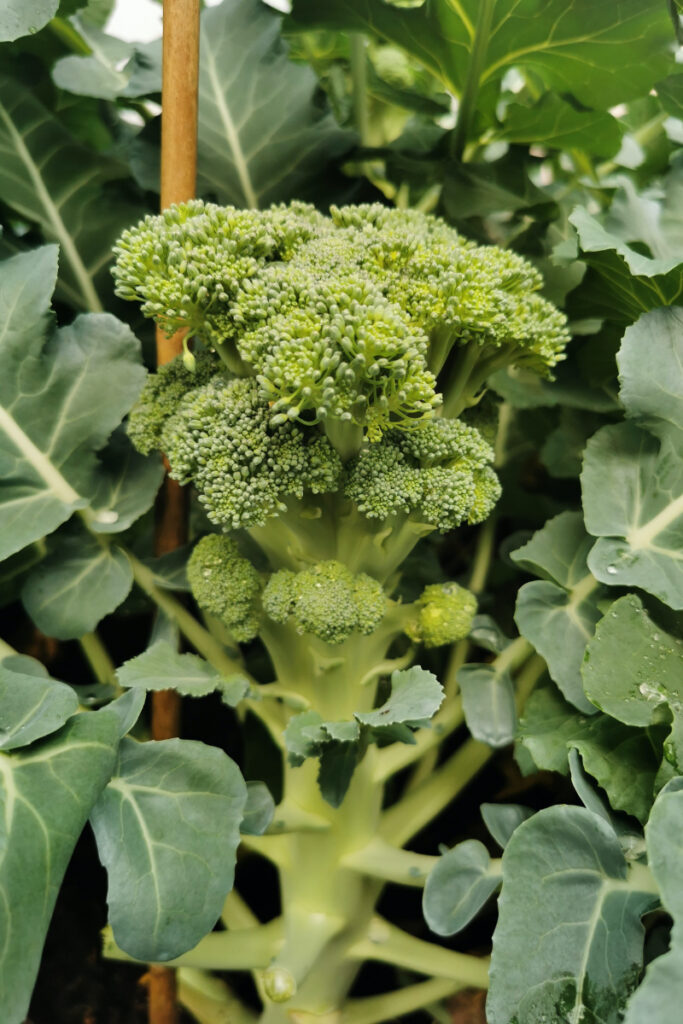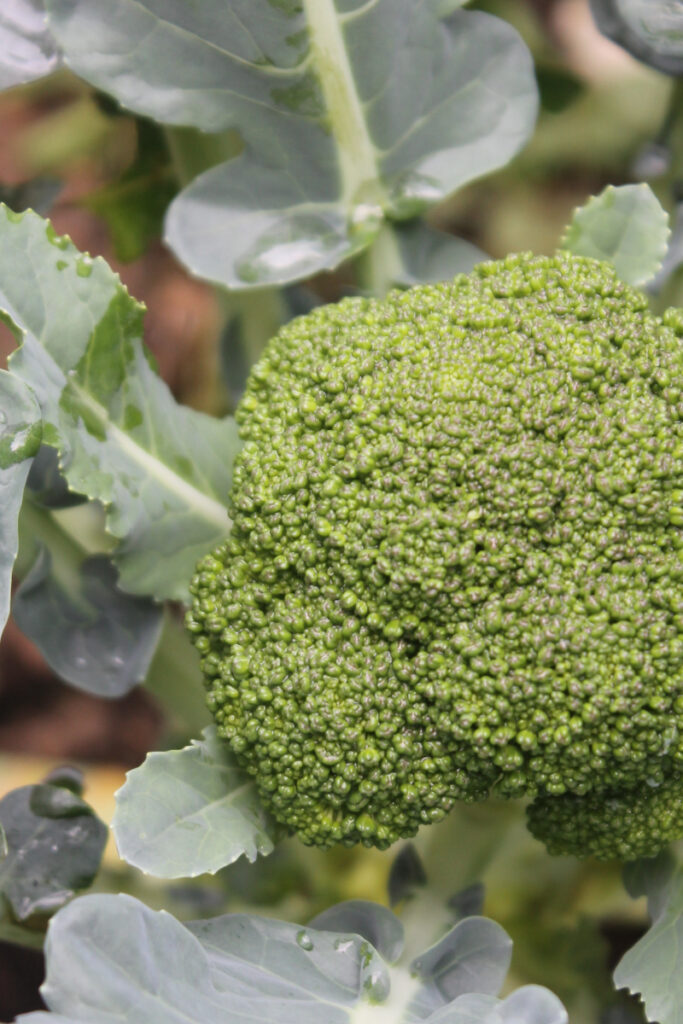Broccoli in Texas: Your Ultimate Growing Guide
Growing broccoli in Texas can be somewhat challenging due to its unique climate and soil conditions. If you’re looking to grow broccoli, however, you can make it a successful endeavor and enjoy fresh produce all season long.
Although broccoli can be planted in the fall or spring, it will do best if planted during the cooler temperatures of fall. Plant your broccoli seeds directly into your garden about four weeks before the first expected frost date for your area, since broccoli is not a fan of hot weather.
In this guide, you’ll learn how to prepare the soil, when and where to plant your seeds, and what type of maintenance broccoli needs from seedling to harvest to secure a successful crop. Read on to find out everything you need to know about growing broccoli in Texas!

Climate and Soil Conditions
Broccoli is a cool-season vegetable, making it an ideal choice for growing in Texas during the fall, winter, and early spring months. The optimal temperature range for broccoli growth is between 60 and 65 degrees Fahrenheit, although it can still tolerate temperatures as low as 45 degrees Fahrenheit. This makes broccoli a suitable option for gardeners in both the warmer and cooler regions of Texas.
When it comes to soil conditions, broccoli prefers well-draining soil with a pH level between 6.0 and 7.0. Proper soil preparation is crucial for creating the best possible environment for your broccoli plants to flourish.
One way to enhance soil fertility and structure is by incorporating organic matter, such as compost or well-rotted manure. Additionally, maintaining consistent soil moisture is essential, so be sure to water your garden regularly.
Choosing the Right Variety
Selecting the best broccoli variety for your Texas garden is essential for a successful harvest. There are several varieties of broccoli that perform well in Texas, each with unique characteristics and growth patterns.
Packman
This popular hybrid variety is known for its heat tolerance and rapid growth, making it perfect for Texas gardeners. Packman produces large, tightly-packed heads with excellent flavor and texture.
Green Magic
Green Magic is another hybrid variety that thrives in warmer climates. It’s an early-maturing broccoli with uniform, dark green heads that resist yellowing in hot temperatures.
Calabrese
Originally from Italy, Calabrese broccoli is a great choice for those looking for a more traditional, heirloom variety. It produces medium-sized heads with a rich, slightly sweet flavor.
Purple Sprouting
As the name suggests, this unique variety produces attractive purple heads instead of the typical green color. Purple Sprouting broccoli is cold-tolerant and has a milder, sweeter taste compared to other varieties.
When choosing which variety to grow, consider factors such as your region’s climate, the size of your garden, and your personal taste preferences. You can purchase seeds or seedlings from local nurseries, farmers’ markets, or online seed retailers.
Starting Your Seeds
The first step in growing broccoli is starting your seeds. Timing is crucial when planting broccoli in Texas, as the ideal planting window varies depending on your location within the state.
When to start planting seeds
For fall planting, start your seeds indoors about 10-12 weeks before the first expected frost in your area. For spring planting, begin seeds indoors 6-8 weeks before the average last frost date. Check a local planting calendar for more specific information on the best planting times for your region.
Tips for starting seeds indoors
Sow seeds in seed trays or small pots filled with a high-quality seed-starting mix. Plant the seeds about 1/4 inch deep and keep the soil consistently moist but not waterlogged. Place the trays in a warm, well-lit area, preferably with a temperature of around 70-75 degrees Fahrenheit. Germination should occur within 5-10 days.
Transferring seedlings outside
Once your seedlings have developed two sets of true leaves and outdoor temperatures are consistently within the ideal range for broccoli growth, it’s time to transplant them into your garden. Harden off the seedlings by gradually exposing them to outdoor conditions over a period of 7-10 days. This will help them acclimate to their new environment and reduce the risk of transplant shock.
Planting and Maintenance
Now that your seedlings have been successfully started indoors and hardened off, it’s time to plant them in your Texas garden. Following these planting and maintenance tips will help ensure a bountiful broccoli harvest.
Spacing and planting depth
Space your seedlings about 18-24 inches apart in rows that are at least 36 inches apart. This allows for adequate air circulation and room for growth. Plant the seedlings at the same depth they were in their containers, ensuring that the soil level remains consistent.
Watering
Broccoli requires consistent moisture to grow properly. Water your plants deeply and regularly, aiming for about 1-1.5 inches of water per week, depending on rainfall and soil conditions. It’s best to water in the morning to allow the plants to dry before nighttime, reducing the risk of fungal diseases.
Fertilizing
To support healthy growth, apply a balanced, slow-release fertilizer at the time of planting. Follow the manufacturer’s instructions for application rates and frequency. Additionally, consider side-dressing with compost or well-rotted manure during the growing season to provide extra nutrients.
Mulching
Applying a layer of organic mulch around your broccoli plants can help retain soil moisture, suppress weeds, and regulate soil temperature. Use materials such as straw, grass clippings, or shredded leaves for effective mulching.
Pest and disease management
Broccoli can be susceptible to pests like cabbage worms, aphids, and flea beetles, as well as diseases such as clubroot and black rot. Regularly inspect your plants for signs of infestation or illness and take prompt action if issues arise. Implement preventive measures like crop rotation, proper sanitation, and the use of floating row covers to reduce the risk of pest and disease problems.
Harvesting and Storage
After nurturing your broccoli plants throughout the growing season, it’s time to enjoy the fruits of your labor. Knowing when and how to harvest your broccoli will ensure the best quality and taste.

Signs of when to harvest
Broccoli is ready to harvest when the central head is firm, tightly-packed, and has reached its maximum size (usually 4-6 inches in diameter). The individual florets should be tightly closed and dark green in color. Harvest before the florets begin to separate or turn yellow, as this indicates that the plant is starting to bolt and the flavor will be compromised.
How to properly harvest
To harvest your broccoli, use a sharp, clean knife to cut the main stem at an angle, about 5-6 inches below the head. This angled cut allows water to drain off the stem, preventing rot. Some varieties will produce side shoots after the main head is harvested, so continue to monitor your plants for additional harvest opportunities.
Tips for storing harvested broccoli
After harvesting, rinse your broccoli in cool water to remove any dirt or insects. To store fresh broccoli, place it in a perforated plastic bag and keep it in the refrigerator crisper drawer. Properly stored broccoli can last up to two weeks. For longer storage, you can blanch and freeze your broccoli for up to one year.
Conclusion
In conclusion, growing broccoli in Texas can be a rewarding and fruitful endeavor with the right knowledge, preparation, and care. By understanding the unique climate and soil conditions of Texas, choosing the best variety for your garden, properly starting seeds, and following essential planting and maintenance tips, you can enjoy a bountiful harvest of this nutritious and versatile vegetable.
Remember to stay vigilant in monitoring your plants for pests and diseases, and be prepared to take action if issues arise. Harvesting and storing your broccoli correctly will ensure that you can savor the delicious taste and texture of your homegrown produce.
I hope this ultimate guide has provided you with the confidence and information needed to successfully grow broccoli in your Texas garden. Embrace the challenge, connect with nature, and enjoy the satisfaction of nurturing a plant from seed to harvest. Happy gardening, and may your broccoli plants thrive in the Lone Star State!